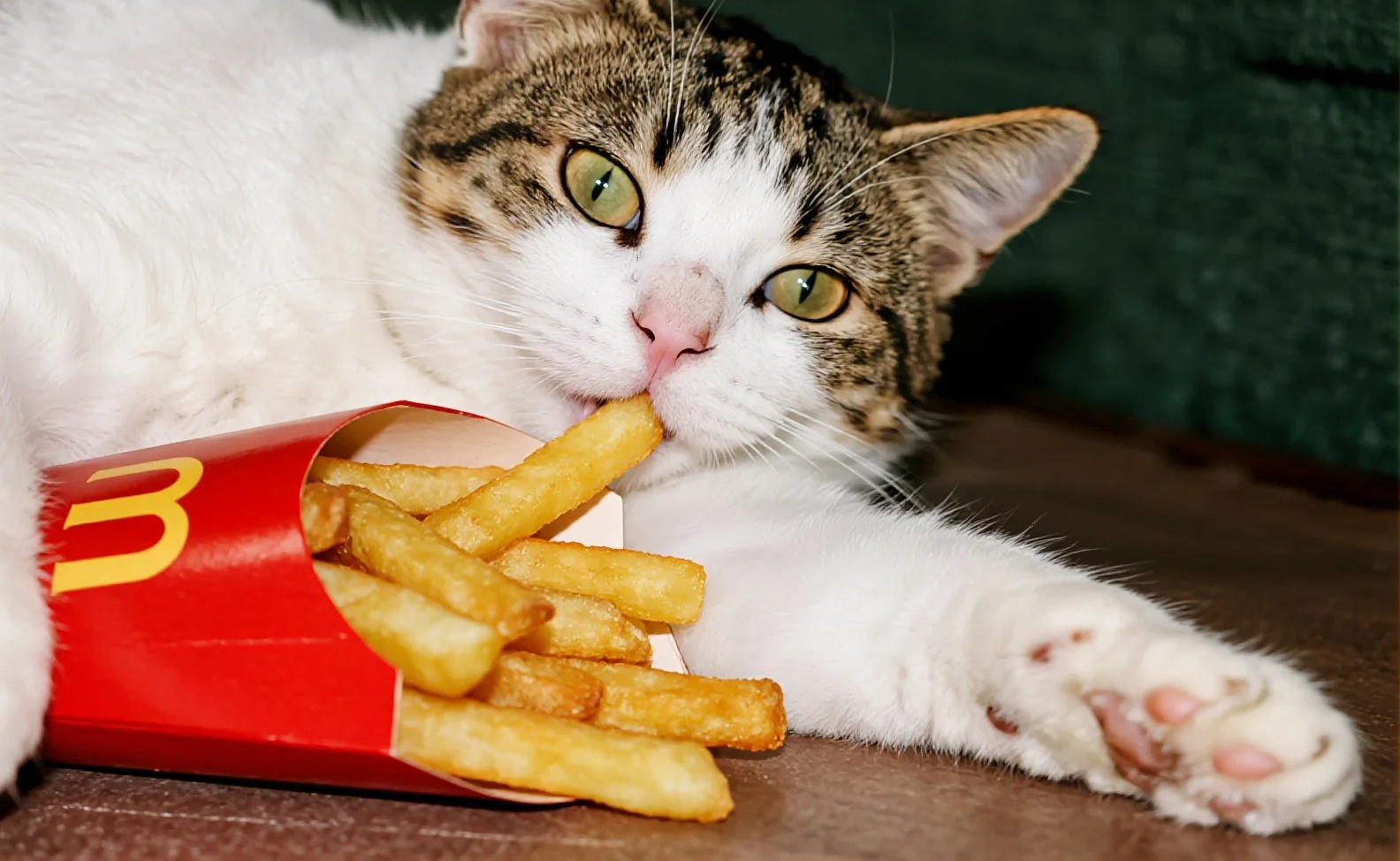When it comes to quirky combinations in the world of pets and food, one of the most debated topics is undeniably cats and fries. While it may seem frivolous, the bond between our feline friends and our favorite fast food side could have intriguing implications. This comprehensive guide aims to uncover the truth about cats and fries, exploring the reasons behind their unusual affinity and providing insights into pet safety.
Table of Contents
Why Are Cats Drawn to Fries?
The Irresistible Aroma
Cats have a keen sense of smell, often more acute than that of humans. The aroma of fried potatoes can trigger their curiosity. Frying enriches the aroma profile of potatoes due to the Maillard reaction, making them particularly appealing to cats. It’s not just the smell of the fries; it’s also the scent of the oil and seasonings that might attract your feline.
Texture and Taste Sensitivities
Cats are obligate carnivores, meaning their diets primarily consist of meat. However, the texture of fries—and their crispy exterior—can be an intriguing novelty for them. The crunchiness may mimic some aspects of prey, stimulating their natural instincts. Even though cats don’t need carbohydrates in their diets, the crunch of a fry might tempt them into tasting it.
Safety Concerns: Can Cats Eat Fries?
While the allure of sharing fries with your kitty might be strong, several safety considerations come into play.
Obesity and Nutritional Imbalance
Fries contain high levels of fats and carbohydrates that aren’t suitable for a cat’s diet. Regular consumption can lead to obesity and other health issues. Cats require a balanced diet rich in protein, and introducing high-calorie foods outside of their dietary requirements can upset their nutritional balance.
Seasoning Dangers
Many fries are heavily salted or seasoned, which can be harmful to cats. Salt can lead to sodium ion poisoning, while certain spices (like garlic and onion) are toxic to felines. Even a tiny amount of these seasonings can be problematic, so it’s best to avoid sharing seasoned fries altogether.
Pancreatitis Risk
Fried foods are known for their potential to cause pancreatitis in pets. The richness of fried foods can trigger inflammation in the pancreas, leading to significant discomfort and health complications. If your cat has a history of pancreatitis or digestive issues, it’s best to steer clear of sharing your fries.
The Behavior Behind the Fries Attraction
Curiosity and Social Learning
Cats are notoriously curious creatures. The sight and smell of fries can spark their instincts to explore. Often, they observe their human companions enjoying food and associate those moments with affection and social interaction. This learned behavior encourages them to seek out fries in hopes of sharing in the experience.
Comfort and Attention
Feeding your cat fries can also become a source of comfort for them. They may associate the act of eating fries with positive attention and companionship. The more they enjoy this attention, the more they may gravitate toward your fries. However, it’s crucial to be mindful of the reasons you give in to your cat’s fried food cravings.
Alternatives to Fries for Your Feline Friend
If you’re feeling generous and want to share a treat with your cat, consider healthier alternatives that are both safe and nutritious:
Cooked Chicken or Turkey
Plain, cooked chicken or turkey can be an excellent treat. These meats provide the protein cats crave and are usually well-tolerated. Always ensure there are no bones, skin, or seasonings before sharing.
Small Amounts of Cooked Pumpkin
Pumpkin is safe for cats in small amounts and can aid in their digestive health. You can consider offering plain, cooked pumpkin as a seasonal treat, especially around Halloween.
Catnip-Infused Snacks
For a fun, cat-approved snack, consider catnip-infused treats. These are safe and can provide both mental stimulation and enjoyment for your kitty.
Conclusion: The Bottom Line on Cats and Fries
While the allure of sharing fries with your feline friend may be tempting, it’s essential to recognize the potential risks involved in indulging their curiosity. Understanding the anatomy of their attraction to fries provides insight into their behavior, but the real lesson is in prioritizing their health and well-being.
If you’re looking for ways to bond with your cat, opt for safe, nutritious alternatives that can be enjoyed without compromising their dietary needs. Your cat will appreciate your thoughtfulness, and you’ll avoid the pitfalls that come with sharing fast food treats.
Ultimately, maintaining a well-balanced diet for your furry companion will lead to a happier and healthier life for both of you—no fries necessary!
